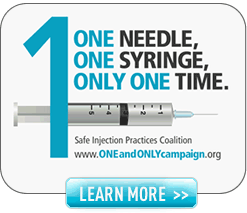Anita Bertrand is a certified nurse anesthetist. She will be giving the 11th Annual Jan Stewart Memorial Lecture at the AANA 2014 Nurse Anesthesia Annual Congress. Her story of addiction and recovery is continued from last week. We are grateful to her for sharing her story of addiction and recovery today and next week.
Prevention
During that time of active addiction, it never occurred to me I’d be asked to drug test, as random drug screening was not practiced in any of the healthcare setting I have been employed. But, how often could we identify a HCW with a developing addiction problem or one that is already out of control by instituting random drug screens? Some HCWs could be helped before harm is caused to patients, or before being discovered in a fatal event, as what happens in specific HCW professions such as anesthesia or ICU nursing. The “survivalist” behavior demonstrated as the brain becomes hijacked by the disease of addiction shows us how little control the addicted HCW has over the outcome of the disease. It WILL be fatal to the HCW left untreated, and in the process may contribute to harm to patients as well.
How many physicians, nurses, technicians, and aides working across the country are struggling with this disease and have no resources available due to fear, shame, stigma, isolation? In my state alone there are hundreds of nurses who are being monitored in the alternative to discipline program sanctioned by the state and the Board of Nursing. These are nurses who are getting help and treating their disease while being monitored in their work environment. This does not count the number of nurses who do not fit the profile to be accepted into the program and are under state board monitoring. This does not include the physicians, dentists, technicians, and other HCWs in the state. This does not include the number of HCWs who have not been discovered or who will succumb to the disease in the future.
Since no profession is immune to this disease, 10% of the number of all HCWs would amount to how many across the country? What needs to happen to not only bring more awareness and education to the problem, but to change the mindset of the industry so that HCW can get the help they need and be able to return to their professions as healthy, recovering providers without the stigma and discrimination? I am extremely grateful for the individuals who intervened for me so that I could get the help I needed before harming a patient or causing further harm to myself.
There is no doubt that we are lacking in understanding of the diseases of addiction and alcoholism. When education is provided, it focuses on the patient with the diseases, and seldom includes the HCW as a patient, and as our career choice being a setup for the triggering of the disease. Individuals who gravitate toward a career as a HCW may have a predisposition toward the disease; access and availability become the trigger. This access and availability may complete the gamut of things that fall into place when the HCW is experiencing trials and tribulations of life events…those HCWs who would not otherwise fall prey to the disease.
When we take action to prevent and treat the disease early, we eliminate the need for law enforcement and criminal actions.
Treatment and Returning to the workplace
We know that approximately 10% of society as a whole has problems with addiction/alcoholism, and unfortunately the majority of these people end up in jails, prisons, and institutions that do very little in the treatment of the disease. The disease is the culprit for the criminal behavior and the treatment is focused on treating the behavior rather than the disease.
Some states have alternative-to-discipline programs for HCWs so that they may obtain treatment while maintaining their licenses “National Association of Alternative Programs” .
There are many states that do not have such programs in place. In some cases the HCW chooses not to, or is unable to enroll in these programs due to legal consequences of the disease. For the states that do not have any kind of alternative to discipline program, the HCW’s ability to obtain employment in the future is essentially ripped away as the licensing board suspends or revokes the license.
Returning to practice in the healthcare setting after treatment for the disease of addiction and alcoholism is extremely difficult. Few hospital settings will employ nurses who have had a history of addiction treatment and are under a monitoring contract with their respective board of nursing or alternative to discipline programs. Again, there is a lack of knowledge and support for both the employer and employee. This realization and understanding on the part of the addicted HCW produces another roadblock for the addicted HCW to willingly seek help for this chronic, progressive, fatal disease.
Gratitude
Personally, I am grateful for the program in place that directed and monitored me before and during my return to work as a healthcare provider. I am extremely grateful for individuals who supported and employed me, giving me a chance to demonstrate that this disease is treatable, and that with treatment, it is possible to continue my career as a HCW and provide safe patient care.
At the end, this is my wish. In the effort to continue to provide safe patient care I encourage HONOReform and all of its great colleagues to continue to do all they can—at the state and federal levels—to prevent drug diversion and help addicted healthcare workers. I pledge my support to my HCW colleagues. As my friend Evelyn McKnight says, “Lives depend on it.”


